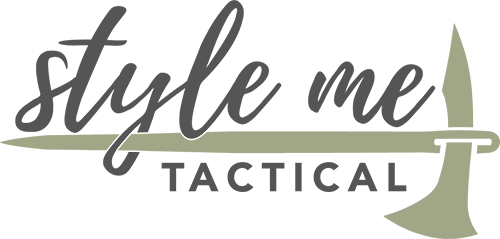Shooting with a Purpose
I always have a plan when I go to the shooting range. Sure, shooting fast at a target is fun but more than likely your hits will be all over the place and you are less likely to have a positive learning experience. Having a plan will keep you accountable, keep your ammo sent down range manageable (especially if you’re on a budget) and use your limited range time wisely. For new shooters, a shooting plan doesn’t have to be complicated. It can be as simple as getting a good grip on your gun, getting your sights on target, and shooting. As your experience grows, you can increase your speed of acquiring your sights or start to add in a follow up shot. Regardless of your experience, it will give you a way to see your progress, overcome challenges, and know your focus areas for next time. Below are a few shooting fundamental areas that might help you with your shooting range plan:
·Shooting With Both Eyes Open: The key benefit I learned about shooting with both eyes open is that it allows you to have a wider field of view which helps with being more situationally aware. I started practicing at home as part of my dry-fire routine. At first, I would get my sight alignment and focus with my left eye closed and then I would slowly open my left eye concentrating on maintaining the focus on my front sight. After doing this, I started with bringing the gun from low-ready up to my line of sight and concentrated on acquiring the proper sight picture with both eyes open. This made for an easier transition to practicing at the range with live ammunition. Once I was comfortable with my hits on target I added in drawing from my holster and then increasing speed. My next challenge will be with increasing the target distance.
Grip Tension & Pressure: I always found myself shooting low left. I had been gripping the gun so tightly that it was transmitting movement to the gun when I pulled the trigger. Once again, I started with dry fire practice at home. I began paying close attention to make sure that my grip pressure is firm but not tight and the only part of my dominate hand that is moving is my trigger finger. At the range, I would begin at low-ready, acquire my sights, and take a mental note of how tight I was gripping the pistol. I had built up some good muscle memory from the dry fire practice and could even catch myself tightening up my grip when pressing the trigger. It really did work! I’ll continue to work on accuracy and distance before adding in drawing from a holster.
Slow & Steady Trigger Pull: When I was first learning to shoot, I was simply pulling the trigger as quickly as possible just to get it over with. Once I understood how tight to grip my pistol, I could start to isolate my trigger finger. I recognized that once I started concentrating on a slow and steady trigger pull that my aim was better, my grip felt more stable and I was able to have a better accuracy on the target. I started to combine practicing my grip tension with practicing my trigger pull. It has caused me to slow down a little bit but that is ok since I’m trying to break bad habits and build new muscle memory.
Each range session I can build upon my last or revisit any trouble areas, like flinching. By using dry fire practice at home, I can help maximize my time spent at the shooting range. I also find it helpful to write down a plan for my range visit ahead of time so while I'm their I know what my focus is. After my range visit, I make some notes about that session so I can revisit them later.
Having a plan at the range will increase your overall satisfaction and you will be able to see yourself improve.

